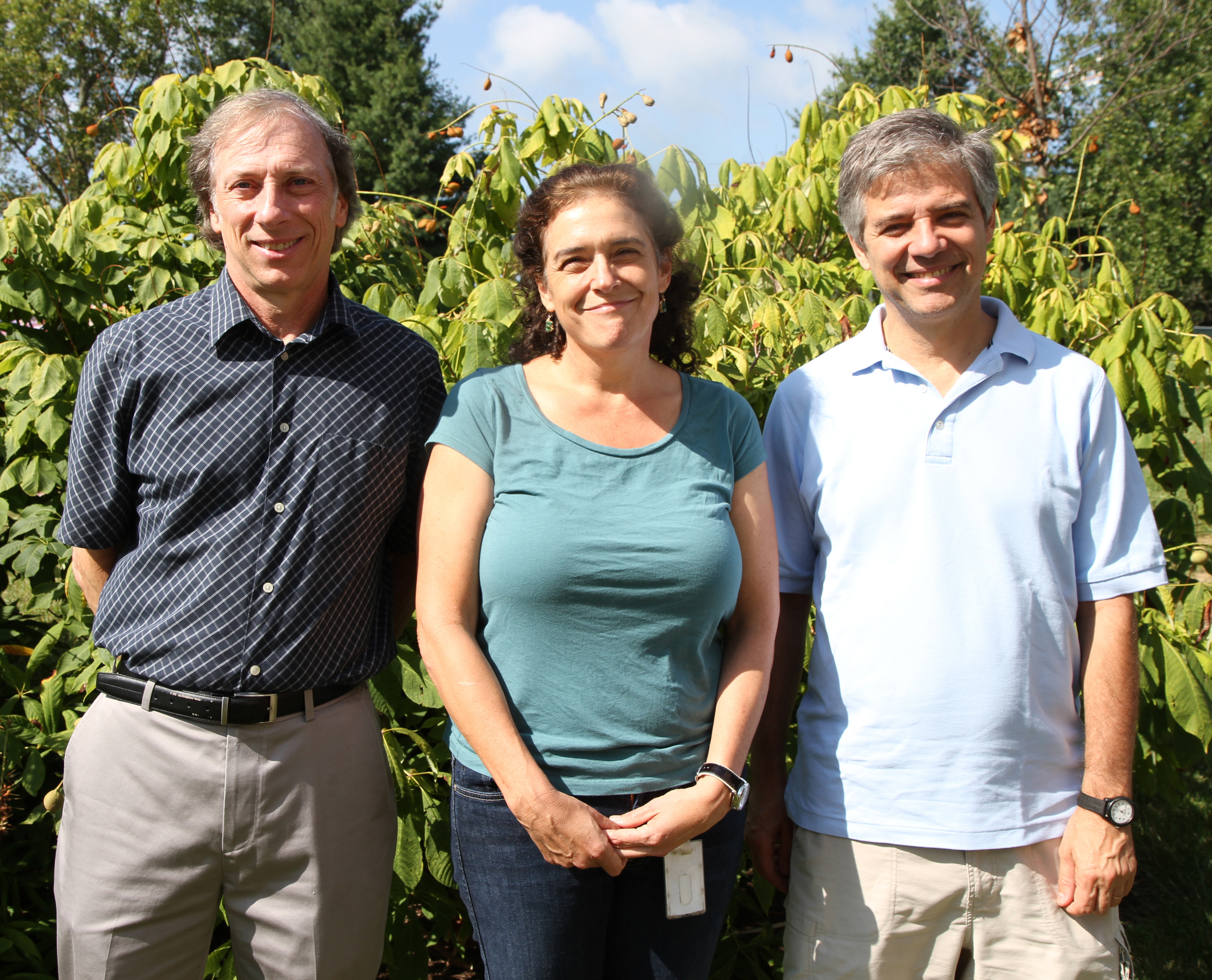Scientists investigate bacterial outliers

Virginia Tech scientists have gained new insight into the evolution of the bacteria Brucella and its associated disease brucellosis, which infects mammals and can cause abortions in cattle and pigs. Humans contract the disease most often by consuming unpasteurized milk or cheese. Symptoms, such as fever, headache, and chills, are similar to the flu.
As detailed in a recent mBio publication, Virginia Tech scientists, using resources available through the Virginia Bioinformatics Institute’s Pathosystems Resource Integration Center, sequenced the genome of two atypical Brucella strains recently isolated from human patients (BO1 and BO2) and previously found to be linked to other atypical Brucella strains isolated from Australian rodents (NF2653 and 83-13).
The core research team included Joao Setubal, adjunct faculty at the Virginia Bioinformatics Institute and professor at the University of São Paulo, Brazil; Stephen Boyle, professor emeritus of microbiology in the department of biomedical science and pathobiology at the Virginia Maryland Regional College of Veterinary Medicine; Rebecca Wattam, a senior computational biologist at the Virginia Bioinformatics Institute; and Thomas Inzana, the Tyler J. and Frances F. Young Professor of Bacteriology in the Virginia-Maryland Regional College of Veterinary Medicine and an affiliated faculty member with the Fralin Life Science Institute. The Virginia Tech researchers collaborated with the Center for Disease Control in Atlanta, Ga., Sandia National Laboratories in Livermore, Calif., and several European universities for this project.
Through phylogenomic and chemical analyses, the Virginia Tech team found that the strains, in particular BO2, are unique in regard to lipopolysaccharide (LPS) O-antigen synthesis. The LPS O-antigen is required for virulence in Brucella species, and is also the basis for typing isolates. The O-antigen of the BO2 strain is more similar to O-antigen from enteric species such as Salmonella or Escherichia coli than to other Brucella species. This demonstrates the existence of a group of diverging Brucella strains with traits that depart from better known strains.
“That difference stands out both because of the general genomic similarity and because of the role the O-antigen may have in the disease process,” Setubal said. “In the long run, we expect that this building block along with many others will generate practical and beneficial results for human and animal health, though this may be years in the future.”
The three-year project was enhanced when Inzana conducted biochemical analyses and proved that the BO2 strain produced a different lipopolysaccharide. The effort was truly interdisciplinary, bringing together researchers specializing in bioinformatics, carbohydrate chemistry, microbiology, biochemistry, and Brucella.
“It was the perfect blend of bioinformatics and experimental science,” Wattam said.




